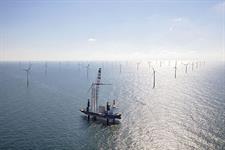Editorial: Accelerating wind power growth in India and driving a green recovery with GWEC India
Energy Disrupter

Wind power can drive a green recovery in India
Throughout the COVID-19 crisis, the Indian government has highlighted the renewable energy sector as an important driver of job and investment creation to recover from the economic impacts of the crisis. In addition, the Indian government has also recognised the important role of renewables to power the economy and other industries throughout the country’s lockdown as one of the most competitive power sources through ‘round-the-clock’ power tenders for renewable energy and including bail-outs to DISCOM’s in recovery packages to create liquidity in the country’s energy market.
However, perhaps the most significant initiative the government has taken so far to power a green recovery with renewables is the ‘Atma Nirbhar Bharat’ or ‘Self-reliant India’ initiative. The wind power sector has been a torch bearer ‘Atma Nirbhar Bharat’ vision, as the government looks to establish India as a renewable energy manufacturing hub to create new jobs, investment and business opportunities in the country.
Currently, the wind power industry supports 58,000 jobs in the country, according to IRENA. If India achieves its 2022 renewable energy target, this could mean over 330,000 jobs in the wind and solar sector combined. Building out further manufacturing capacity in India could create even more jobs in the country, which are crucial to realise local economic recovery from the pandemic. However, in order for India to realise its vision of being a manufacturing hub, it is essential that there is long-term market visibility in order to bring in investors and encourage development of a local industry.
Despite the commitment of the Indian government to renewable energy and a green recovery, investment in clean energy still lags behind these ambitions. According to the Energy Policy Tracker, India has committed at least $23.3 billion in its stimulus packages to support the energy sector, with $9.86 billion earmarked for the fossil fuel sector, a further $12.1 billion for DISCOMs, and a meagre $1.3 billion for clean energy in comparison. If India is serious about accelerating renewable energy growth and reaping the associated socioeconomic benefits, then investment will need to reflect these ambitions.
This is more important than ever as the industry can be a critical driver of jobs and investment, while delivering low-cost power to energy-intensive industries, to power an economic recovery from COVID-19.
















